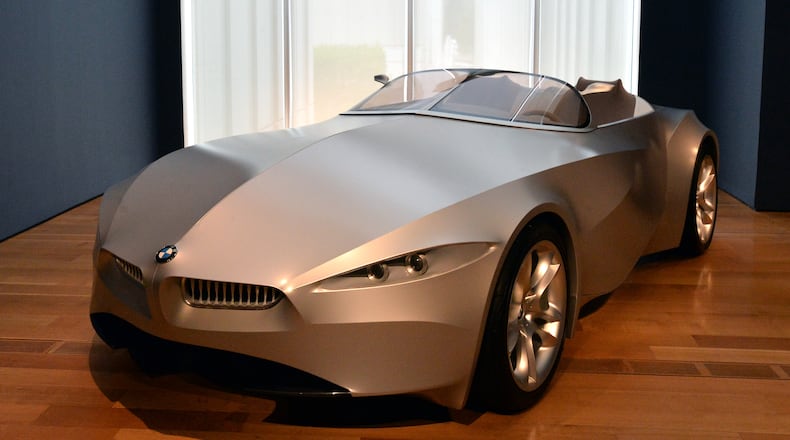My wife calls it a “flat” finish, but I call it “enameled.” It’s different, shocking, beautiful and eye-catching.
Has anyone else noticed? Fill us in on the history of this new paint finish. Thanks. -- John
RAY: Uh-oh, looks like Frank in the paint department forgot to buff out another one. It’s most commonly called a “matte” finish, John. BMW calls it “frozen,” because it looks like a bag of peas that just came out of the freezer with a coat of frost on it. And it is a very cool-looking finish. Who says cars have to be shiny?
It’s prepared the same way as any other paint job. The primer and paint are applied and then a clear coat is added on top of the paint. But instead of buffing the clear coat to a smooth finish, the clear coat is left unpolished. That’s what creates the nonshiny, matte appearance.
Because it’s created the same way, it’s just as durable as any other paint job. But maintenance isn’t quite as easy. Most manufacturers recommend that you hand-wash a car with a matte finish, as the fast-spinning brushes of some automatic car washes can shine up individual spots -- making the car look like the face of a teenager with greasy splotches.
You also can’t fix scratches very easily. On most cars, if you get a modest scratch that only goes into the clearcoat, you buff the clearcoat and make the scratch disappear. If you buff a spot on a matte finish, you’ll shine up that spot and ruin the look. If you don’t remove a stain in time, and it etches into the clearcoat, you’ve got the same problem.
I don’t know how hard it is for a body shop to match an individual door or fender, should you need to replace one after an accident. But I’m guessing it’s harder to match than a traditional, shiny finish. And, of course, you can’t use a normal car wax on it. You’ll need a specialty product, lest you accidentally shine up the finish you spent an extra $3,000 to special order.
So, like you, I’m a big fan of these new matte finishes, John. Especially on other people’s cars.
Hard-to-steer Buick may require more than strong arms
Dear Car Talk:
I bought a new Buick Rendezvous in 2004. It has 226,400 miles on it now. It has been well maintained and driven by me, now a 77-year-old lady.
The power steering became hard to turn. So, my mechanic put in a new power steering pump, new serpentine belt, new high pressure and return hoses and a new rack and pinion. It is still hard to turn at times. Can you tell me what I still need to do? -- Jo Ann
RAY: Have you considered joining the YMCA, Jo Ann? Maybe getting into kettlebells?
This is unfortunate. I’m guessing you’ve already spent at least $2,000 to $3,000. And they’ve replaced pretty much every component in the power steering system: the pump, the hoses, and most expensive of all, the rack and pinion.
I suppose it’s possible that they installed a remanufactured pump or rack and pinion that’s faulty. But that’s not very likely. More likely, the “power” part of your power steering system is working fine, and there’s something mechanical -- outside of that system -- that’s making it hard to turn the wheels.
For instance, like most cars, your Buick has something called McPherson strut suspension. That’s a gizmo with a shock absorber inside a coil spring. You have one on each front wheel. They attach at one end to the car’s steering assembly and at the other end to the front fender.
Up top, near the fender, there’s a ball bearing, so the whole thing can swivel when you turn the steering wheel. Well, if those ball bearings are rusted or worn out -- which would not be shocking on a car with nearly a quarter of a million miles on it -- that would make the car hard to steer. You test that by disconnecting the strut from the steering knuckle and then seeing if it turns freely by hand. If not, there’s your problem.
In any case, I think it’s fair for you to go back to your mechanic and say, “I know you tried, but I spent a lot of money so far, and my car is still hard to steer. I still need you to figure out what’s wrong and fix it, please.”
He can then test the strut towers, the ball joints or anything else he can think of. Or if he reaches the limit of his abilities, he should refund the labor portion of your bill (probably about half the cost) and let you take the car to the dealer or someone else who’s willing and able to figure it out.
I wish you the best of luck, Jo Ann. Write back and let me know the solution so I can be more helpful to my next ‘04 Rendezvous sufferer.
Got a question about cars? Write to Ray in care of King Features, 628 Virginia Drive, Orlando, FL 32803, or email by visiting the Car Talk website at www.cartalk.com.

